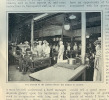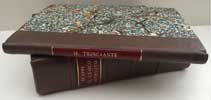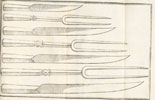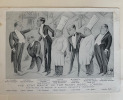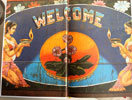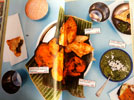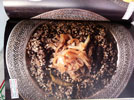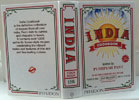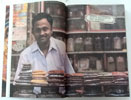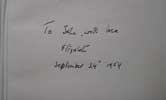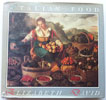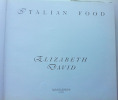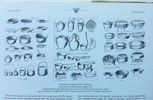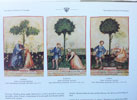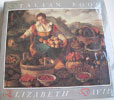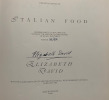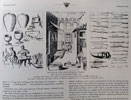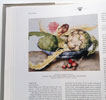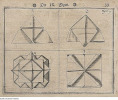HOUSEHOLD GUIDE.
EVERY DEPARTMENT OF PRACTICAL LIFE: BEING A Complete Encyclopaedia OF DOMESTIC AND SOCIAL ECONOMY. (single thin line) NEW AND REVISED EDITION. (single thin line) Vol 1. CASSELL & COMPANY, LIMITED: LONDON. PARIS & MELBOURNE. (single thin line) (ALL RIGHTS RESERVED)
C irca 1875. 4 x 4to. 260 x 200 mm. Every volume same title page. VOL.1. 1fep. [1] A coloured chromolithograph plate as frontis. Title page. [1] 2p Index. (1)2 - 380. 1fep. VOL.2. 1fep. [1] A coloured chromolithograph plate as frontis. Title page. [1] 2p Index. (1)2 - 380. 1fep. VOL.3 1fep. [1] A coloured chromolithograph plate as frontis. Title page. [1] 2p Index. (1)2 - 364. 1fep. VOL.4 1fep. [1] A coloured chromolithograph plate as frontis. Title page. [1] 2p Index. (1)2 - 374. 375 - 380 Useful Tables. (1)i - xxviii General Index. 1fep. A books hardcovered bound in brown cloth with ornate embossed tooling and design in blue and gilt on front covers and spines. The 4 volumes are numbered on the spines. A fantastic set.
- These fine Cassell company produced books are very hard to get any precise bibliographical information about. What is clear, is the many guides to household management that were published during the Victorian period 'Cassell's Household Guide' is both typical of this genre and one of the most comprehensive and best. Each of the four volumes contains a series of essays on various topics, tasks and areas of concern and help for the household. Not only for the wife but also the husband. The general index at the end of the fourth volume covers all the other three volumes. Detailed articles vary in length but the breadth of information brought to each subject is amazing, A comprehensive look at Victorian middle-class life, from making aquariums to pie recipes, as well as all aspects of food preparation. The guide is well organised across the four volumes. Containing eight coloured plates and accompanied by monochrome vignette illustrations throughout, providing any homeowner with all the knowledge they might want or need. When you see the clamour for copies of Mrs Beeton's Household Management, then compare this copy of Cassell's production, one can only comprehend this extremely fine set is very underrated.






click on image to enlarge

Antiquarian category
ref number:
11279 


